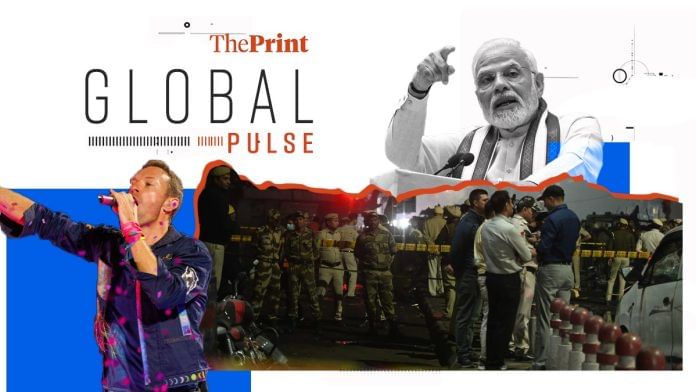New Delhi: In The New York Times, Mujib Mashal and Eilan Petier report on the explosions in both India and Pakistan, as well as the current dynamics between the two nations.
“There was nothing to connect the explosions directly, but they came at a moment of simmering tensions between the South Asian rivals just months after the two countries fought a short but intense military conflict triggered by finger-pointing over a previous episode of terrorist carnage,” says the NYT report.
The report discusses whether speculations surrounding the blasts could devolve into a blame game that can further escalate tensions.
“Analysts in New Delhi said that while tensions remain high, the spring conflict between the two countries showed how quickly things could escalate with the introduction of drones. The trail for investigators could also be more complex than the attack in Kashmir. New Delhi has been on the radar of other terrorist groups such as the Islamic State,” the NYT report says, noting that the “same could be said for Pakistan”, where the government is under pressure owing to “relentless attacks from militants across the country”.
“Pakistan’s political and military leadership has ramped up inflammatory rhetoric against India since being emboldened by their four-day clash in May,” says the NYT.
Top government officials, including Education Minister Dharmendra Pradhan, have been unequivocal in their support for Sridhar Vembu’s Arattai. But “dethroning” WhatsApp in India is a challenge, report Andres Schipani, Jyotsna Singh, and Krishn Kaushik in the Financial Times.
“Arattai declined to disclose active user figures, but experts said it would be far less than its US rival,” says the FT report.
“Vembu noted during the surge last month that Zoho’s ‘hardworking engineers’ were staying in India—a veiled swipe at Trump’s move to tighten restrictions on US H-1B visas for skilled foreign workers, 70 percent of which were issued to Indian nationals,” says the FT report, which refers to the push as “tech nationalism.”
As the 2025 financial year comes to a close, India will overtake Japan to become the world’s fourth-largest economy– a “remarkable feat,” writes Leo Mirani in The Economist. Yet, it remains a “poor country.”
“They should not break out the champagne just yet,” writes Mirani. “For all its growth, India remains a poor country. A more revealing measure of India’s development than the size of the economy is its GDP per person. Though it will soon edge past Japan in overall GDP, the fruits are shared among more than 11 times as many people.”
While the rate of extreme poverty has dropped from 27 to five per cent, notes The Economist, the absolute numbers are “still staggering.”
The report says, “In 2022, 75 million, more than the population of Britain, survived on less than $3 a day. Another 267 million, about twice the population of Mexico, scraped by on less than $4.20 a day,” which is the World Bank’s poverty line for lower-middle-income countries like India. “The country ranks 102nd out of 123 on a ranking compiled by the Global Hunger Index.”
The Financial Times also reports on India’s burgeoning “concert economy”, now picking up steam amid various regulatory challenges and infrastructural hurdles. “By 2030, New Delhi wants the country to establish itself among the world’s top five live entertainment markets—joining the US, UK, South Korea and UAE,” says the FT report.
“Much work needs to be done before then. Beyond some cricket stadiums, India still struggles with a scarcity of international-standard venues.”
The inflexion point came last year, when Prime Minister Modi hailed his home state of Gujarat for successfully hosting Coldplay in Ahmedabad. But despite big-ticket acts, problems persist.
“Another problem, according to event planners, is the barriers presented by India’s infamously opaque red tape. Modi’s government acknowledges the problems faced by concert and festival organisers, who often have to obtain more than 10 separate permissions and permits per event,” says the FT report.
(Edited by Madhurita Goswami)






